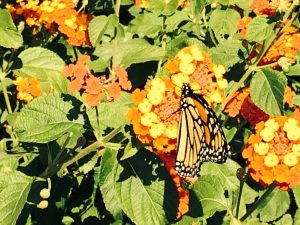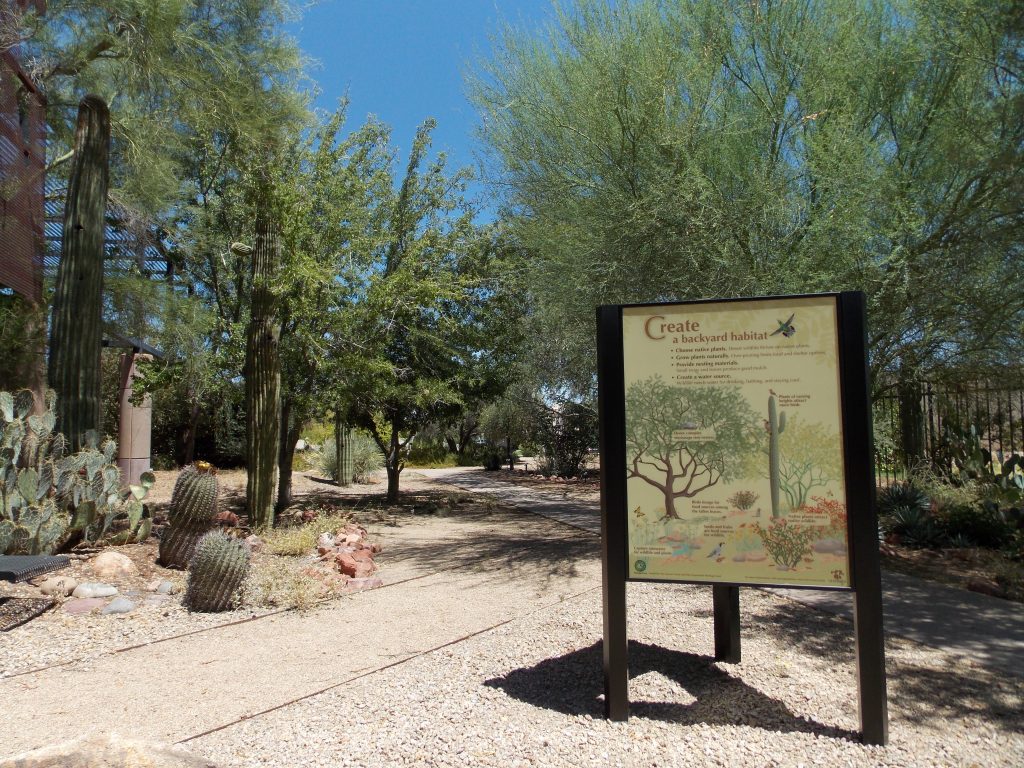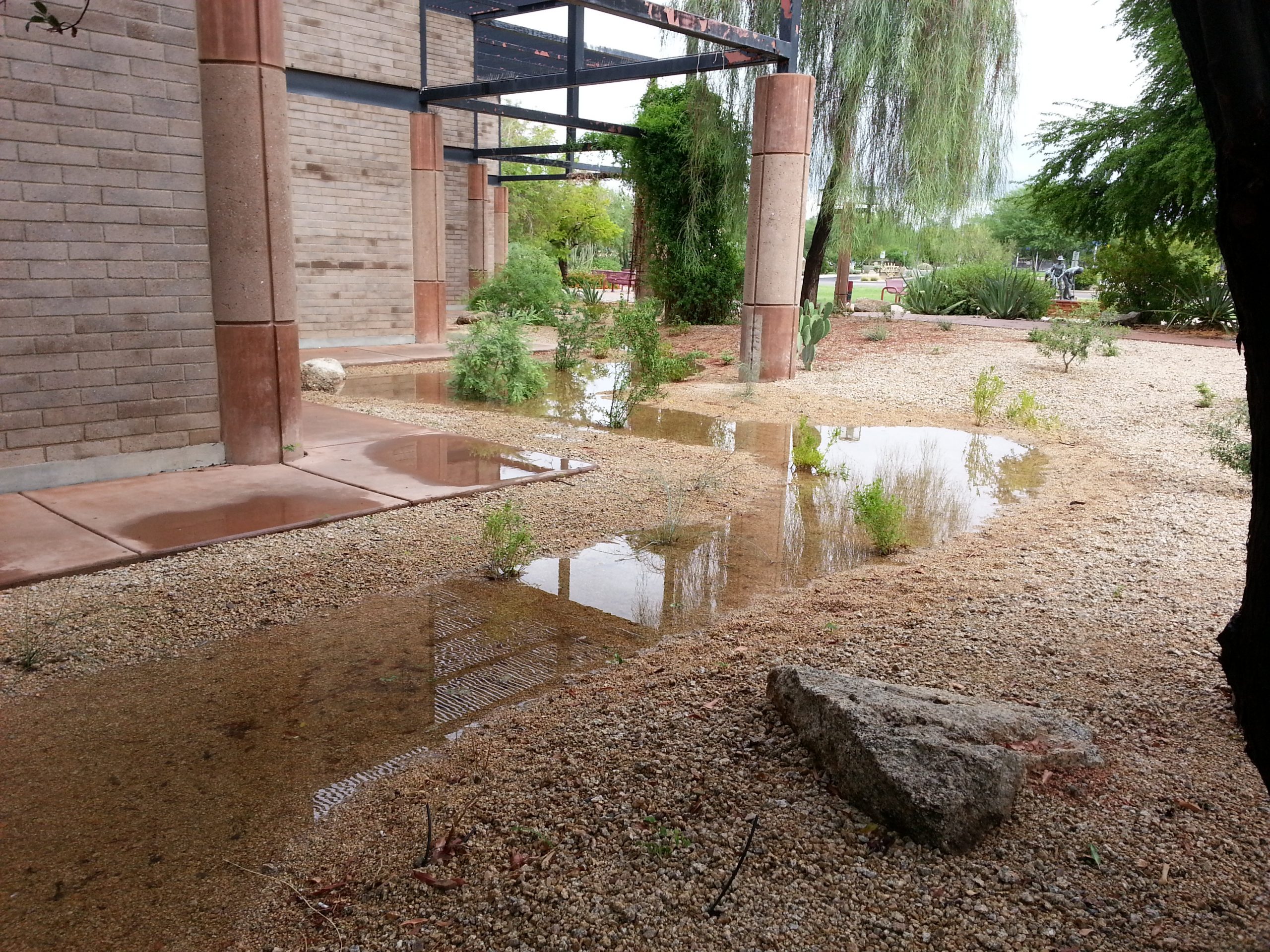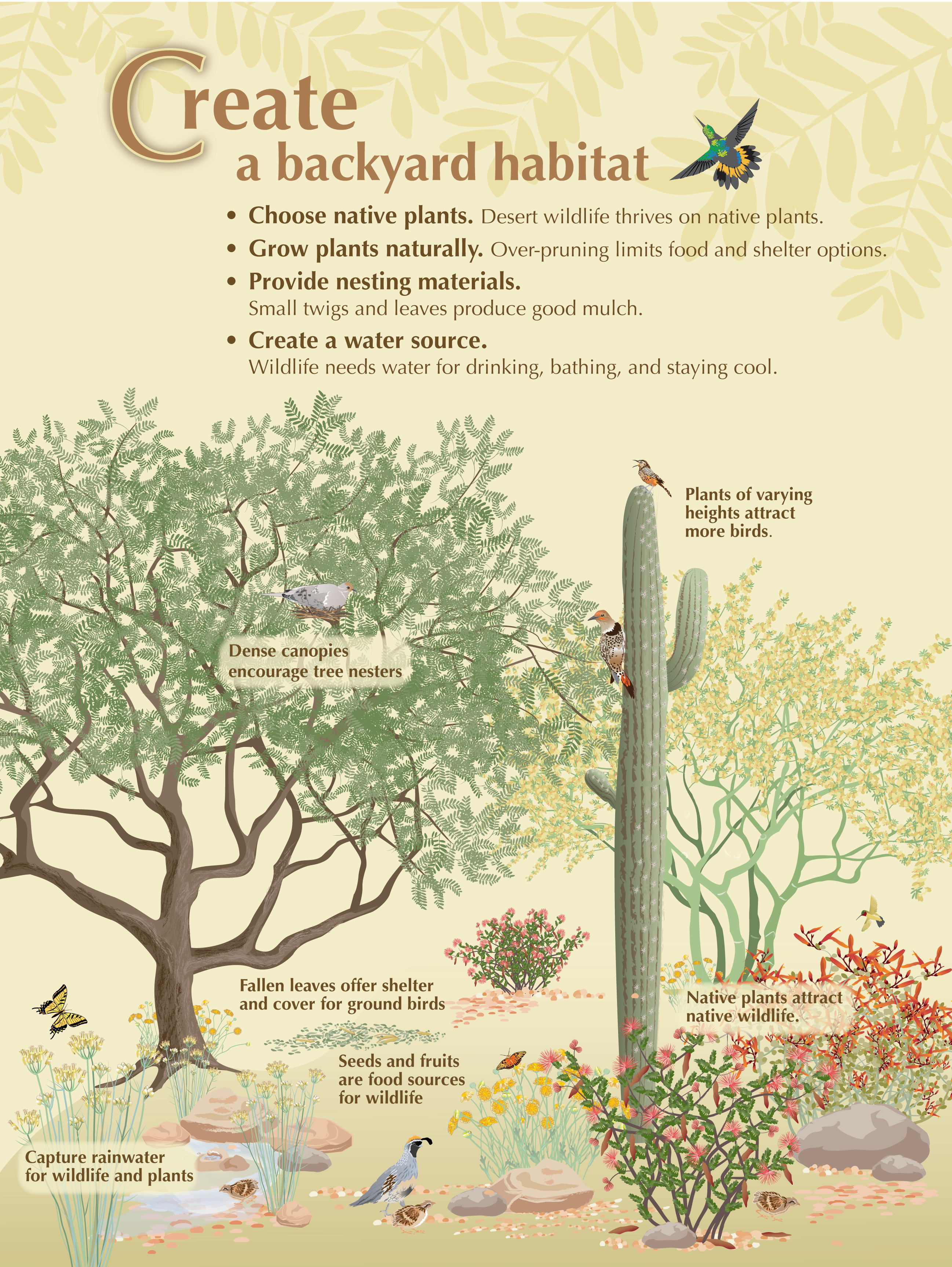The award-winning Xeriscape Demonstration Garden at the Glendale Main Library, 5959 W. Brown Street, began in June of 1990. Since that time, the garden has grown to nearly four acres in size with more than 400 species of plants. But, did you know that the garden is also certified as a Wildlife Habitat by the National Wildlife Federation for providing wildlife with resources such as food, water, shelter, and space to raise offspring?
 Food
Food
Wildlife require food to survive. When providing food sources in your yard; choose native plants. Wildlife are accustomed to and depend on native plants as a vital food source for survival. Some native plants of the Sonoran Desert are Brittlebush, Saguaro Cactus, Globe Mallow, Velvet Mesquite, and Ocotillo. Add diversity to your garden by choosing native plants with different blooming seasons. This will ensure your garden visitors are fed all year long.
A question to consider when designing a habitat is what kind of wildlife are you trying to attract? Do you want to attract hummingbirds, bats, butterflies, or all of the above? Knowing about the wildlife you want to attract will help you select the right native plants. Native plants not only support wildlife, but can boost the look of the landscape by bringing pops of color, diverse shapes, and adding fragrant aromas to your space.
Water
Wildlife need clean water for drinking, bathing, and staying cool. You can be creative in the ways you choose to provide water for wildlife. Some options include traditional bird baths, rocks with concave surfaces, and rain gardens.
Building a rain garden is relatively simple and will make your plants happy. Rain gardens utilize basins, or depressions to capture rainwater. When designing your rain garden, you want to plant native plants near basins where rainwater will soak into the root zone. Just imagine…receiving 1-inch of rainfall from a 1,000 square foot roof can provide 600 gallons of water!
If providing water for wildlife, make sure water is cleaned out every few days to prevent mosquito breeding grounds and spread of diseases.
 Shelter & Space to Raise Offspring
Shelter & Space to Raise Offspring
Shelter allows wildlife to hide from predators, people, and weather. Places for shelter often serve as spaces for wildlife to raise offspring. When designing the perfect shelter, think about the types of wildlife you want to attract to your yard and use that as a guide for plant selection and placement.
An important tip is to grow plants naturally. Over-pruning limits shelter options and exposes wildlife, making them vulnerable to predators. Create points of refuge and escape routes by placing plants in clusters.
Wildlife not only need to find space to raise offspring, but require the materials to do so. Support spaces to raise offspring by leaving the appropriate nesting materials in your landscape such as twigs, leaves, tree limbs, and brush piles. Birds such as flickers and woodpeckers build nesting cavities in Saguaros, whereas verdins build nests throughout the year using thorns, twigs, and grass.
Visit the Glendale Xeriscape Demonstration Garden and check out our informational 3-sided kiosk. Learn tips on how to create a backyard habitat, the importance of pollinators, and sustainable landscape practices. This project is part of the Habitat Garden Education Program, funded by the Arizona Game and Fish Department’s Heritage Fund Grant.
Omone’ Abu is a Conservation Specialist with the City of Glendale’s Conservation & Sustainable Living Division, one of fifteen Water – Use It Wisely partners to offer water saving advice and programs.




